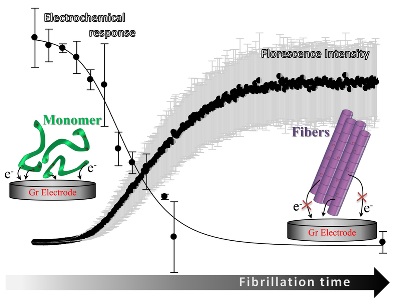2021.09.02.
We are “iNANO walkers” and we walked 5 km in 49 min. Were we fast? - may be not, but we were possibly the best! - 69th of 531!
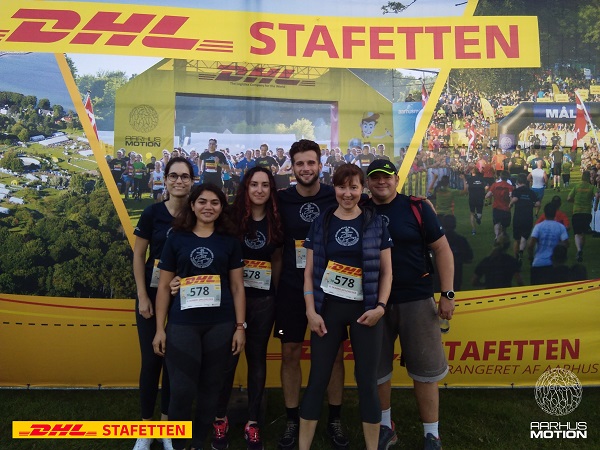
2021.02.01
Malecka, K.; Mikuła, E.; Ferapontova, E.E. Design Strategies for Electrochemical Aptasensors for Cancer Diagnostic Devices. Sensors 2021, 21, 736 (p. 1-41). https://doi.org/10.3390/s21030736:
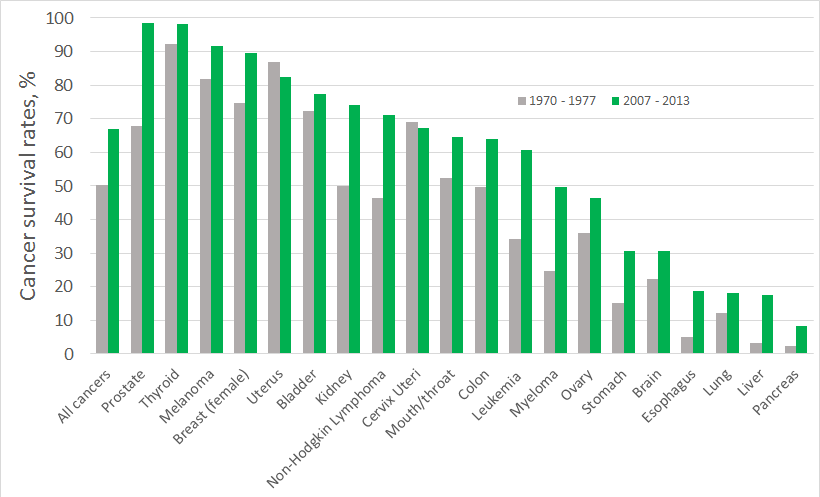
Binte Jamal, R.; Shipovskov, S.; Ferapontova, E.E., Electrochemical Immuno- and Aptamer-Based Assays for Bacteria: Pros and Cons over Traditional Detection Schemes, Sensors 20(19) 2020 5561 (p.1-27). https://doi.org/10.3390/s20195561:
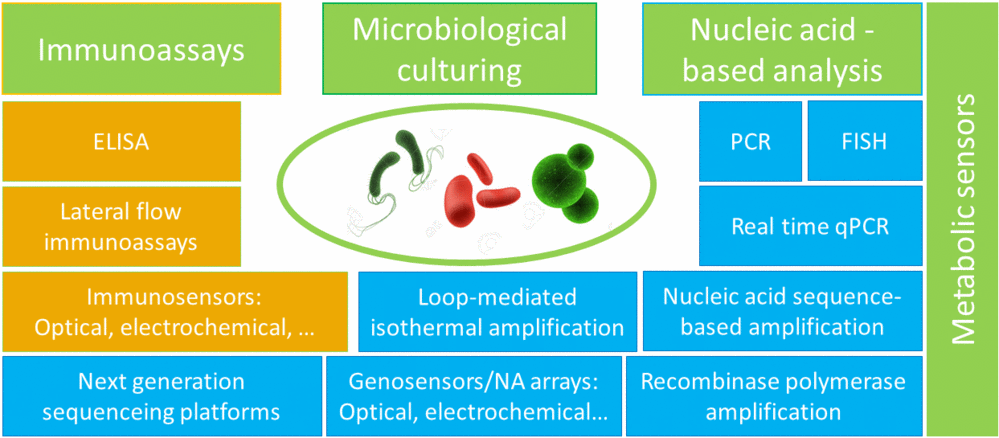
Ferapontova, E.E., Electrochemical assays for microbial analysis: How far they are from solving microbiota and microbiome challenges, Curr. Opin. Electrochem. 19 2020 153-161, https://doi.org/10.1016/j.coelec.2019.12.005:

2019.03.01
Special Issue of Angewandte Chemie: Women in Chemistry is out: “the excellent research being done in groups being successfully run by female researchers”.
Our work published in this issue: Directional Preference of DNA‐Mediated Electron Transfer in Gold‐Tethered DNA Duplexes: Is DNA a Molecular Rectifier? P.3048-3052.
We show that DNA‐mediated long‐range electron transfer in gold‐tethered DNA duplexes is sequence specific and shows directional preference, making DNA a molecular rectifier. For more details see here.

2018.07.20
Week 29 is the famous vacation week in Skagen, Denmark - a good opprotunity to combine electrochemical discussions with walking along the Skagen strand.
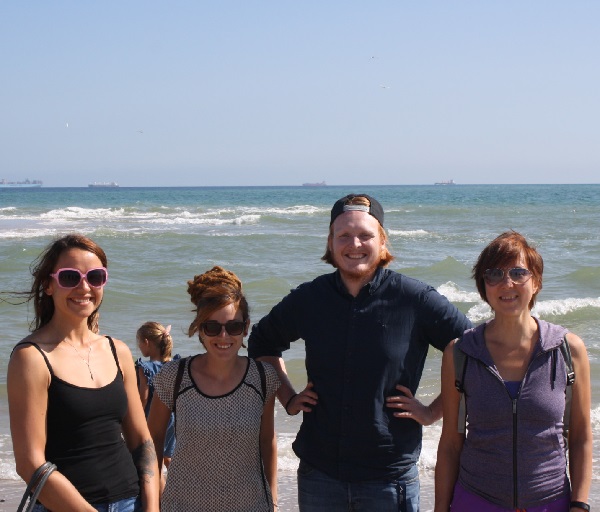
2018.03.01
We are pleased to host sabbatical stay of Prof. Bernie Kraatz (Vice Principal Research of the Universiy of Toronto). Prof. Kraatz stays in the group for March and April 2018.
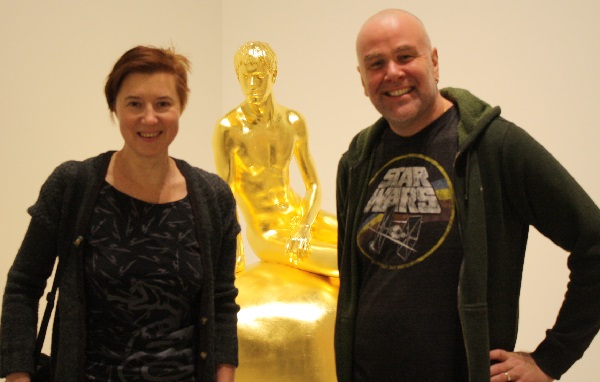
2017.05.12
Today László Kékedy-Nagy has defended his PhD work on "Electrical Properties of DNA and Their Use in Biosensors for Cancer Biomarkers"
Opponents were: Professor Heinz-Bernhard Kraatz, Vice-Principal Research at the Department of Physical and Environmental sciences, University of Toronto, Canada;
Professor Robert J. Foster, Director of National Centre for Sensor Research, School of Chemical Sciences, Dublin City University, Dublin, Ireland.
Chairman: Professor Troels Skrydstrup, iNANO and Department of Chemistry, Aarhus University.
Congratulations, Laszlo! You did a great job!
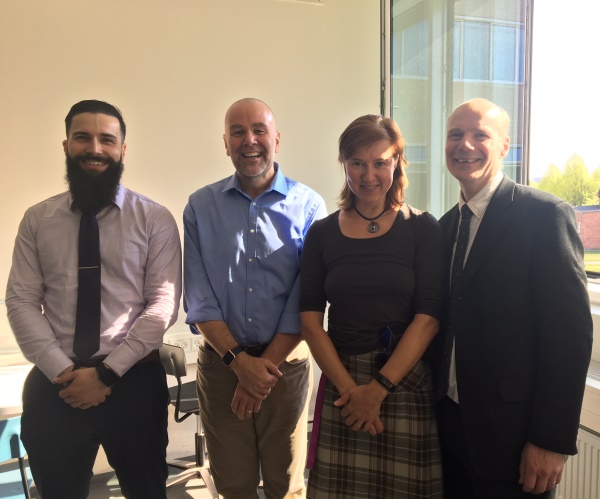
11.09.2015
The Bachelor project "Electrochemical biosensors for clinical analysis of micro RNA biomarkers of cancer" performed by Esther Tanumihardja during her Erasmus Programme stay in our group won Hanze Innovation Award 2015 at Hanze University of Applied Sciences, Groningen, the Netherlands.
Congratulations, Esther!
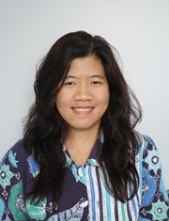
27.08.2015
Today Lazslo Kekedy-Nagy passed through his Part A exam on his PhD work on "Exploitation of Electron Transfer Properties of DNA in Bioelectronic and Biosensing Devices".
Examiners were: Assoc. Professor Noemi Rozlosnik, Department of Micro- and Nanotechnology, Technical University of Denmark; and Assoc. Professor Torben Rene Jensen, Department of Chemistry and iNANO, Aarhus University, Denmark.
Well done and keep going, Lazslo!
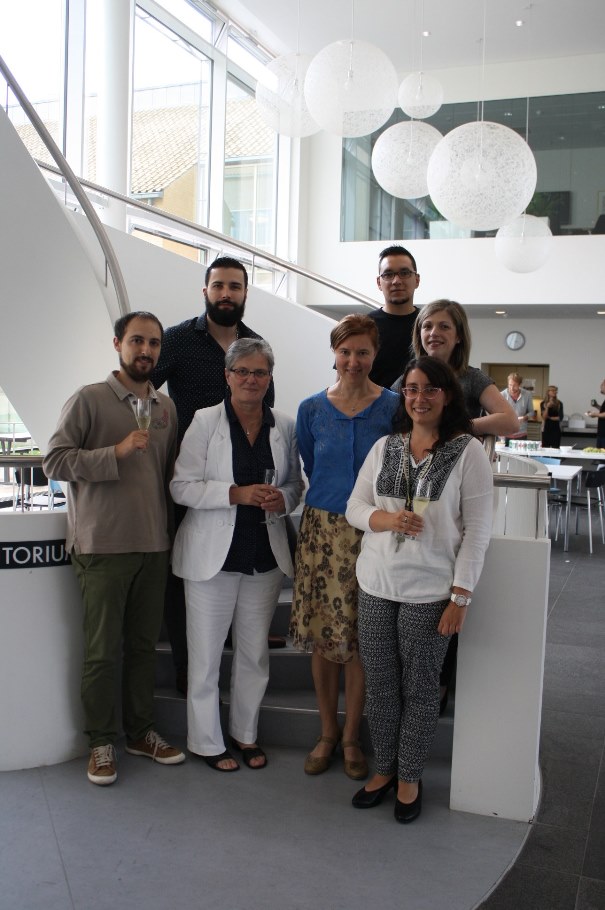
29 July - 2 June the 2nd Summer School in Molecular Electrochemistry, Microechem 2015, took place in Amealco de Bonfil, Queretaro, Mexico. Tutorial lectures have been given by Flavio Maran, Annia Galano, Jiri Ludwik, Jerzy Radecki, Andrew P. Doherty, Hanna Radecka and Elena Ferapontova. It was a great time and experience! Here is the link.
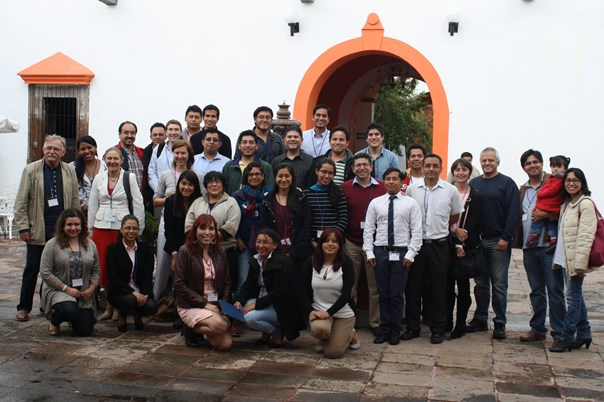
Full size image is here.
2015.04.06.
Laszlo has spent two weeks working in the lab of Prof. Alexander Kotlyar at the George S. Wise Faculty of Life Sciences, Tel-Aviv University working on DNA nanotechnology. Welcome back, Laszlo!

2015.03.14
Dear Nanoscience 2015-2016 class! Congratulation with passing the examination. It was a pleasure to teach you. Good luck in your future studies!
Elena
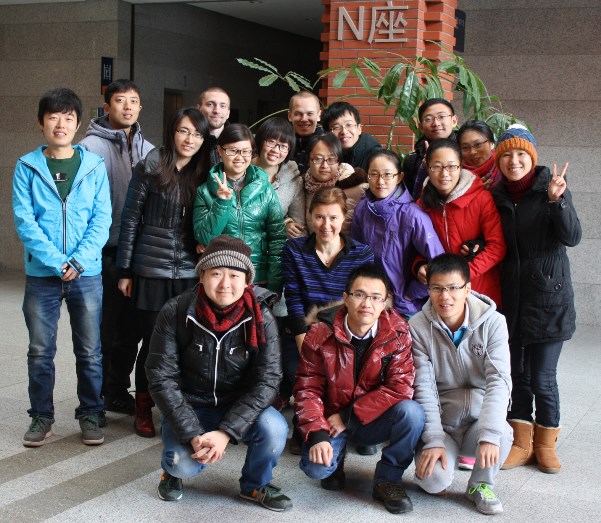
2015.01.22
Isabel has received the first prize in poster session for her poster on wiring of proteins to electrodes by dendrimeric structures. Congratulations!
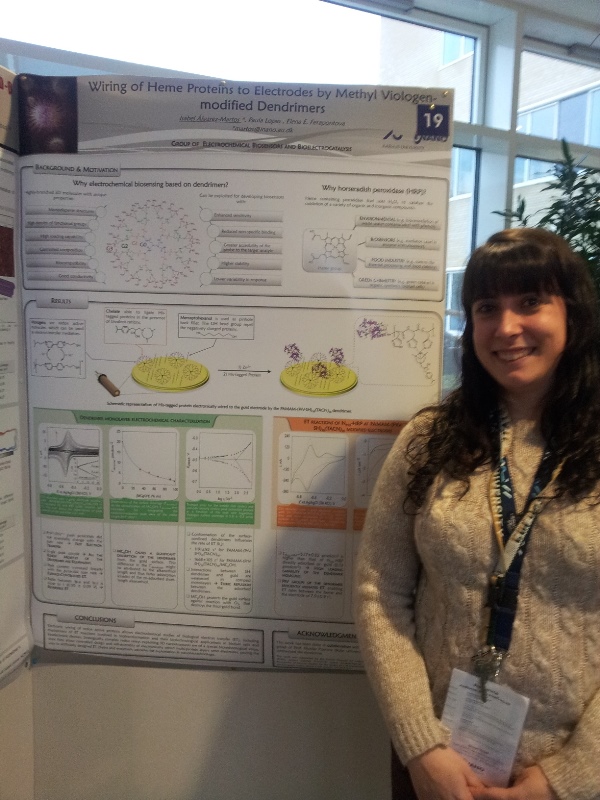
2014.06.17
Rapid detection of bacteria, virus, fungi or protozoa is the first step in protecting human health. However, available detection methods often require days to weeks. The Danish Council of Independent Research (FTP) has granted funds for the development of ultrasensitive electrochemical biosensor nanotechnology for rapid, species-specific and sensitive quantification of diverse pathogenic microorganisms in air and water at their attomolar concentrations. This nanotechnology will be cost-effective, easy-to-handle, ultra-sensitive, and will allow rapid and simultaneous quantification of several different organisms in environmental monitoring of drinking water supplies, recreational waters, and hospital and city air.
The project is performed in collaboration with the Environmental Microbiology and Biotechnology group, Environmental Science, Roskilde, Danish sensor-producing company Unisense, pump-producing Grundfos, and air-analyser producer TSI Inc., USA.
Read FTP news here (in Danish).
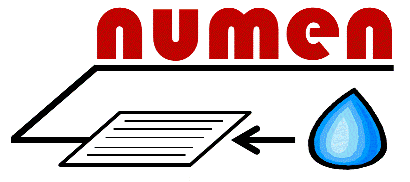
2014.06.10
A large part of total world energy consumption is derived from non-renewable fossil fuels. Replacing this source of energy by solar energy via harvesting it in photovoltaic devices is a challenging and highly attractive alternative, particularly through the photoelectrocatalytic water splitting reaction schemes.
Within the China-Denmark collaborative program: the Sino-Danish Center for Education and Research (SDC), the iNANO (Biosensors and Bioelectrocatalysis group of Assoc. Prof. Elena Ferapontova) and the Shanghai Institute of Applied Physics (the group of Prof. Chunhai Fan) have developed metal-doped hematite photoanodes with improved photoelectrocatalytic activity and efficiency in the water splitting reaction, therewith demonstrating one of the best hitherto reported characteristics of photoelectrocatalysis.
The research article entitled “Visible Light Driven Photoelectrochemical Water Oxidation by Zn- and Ti- doped Hematite Nanostructure” is just published in ACS Catalysis.
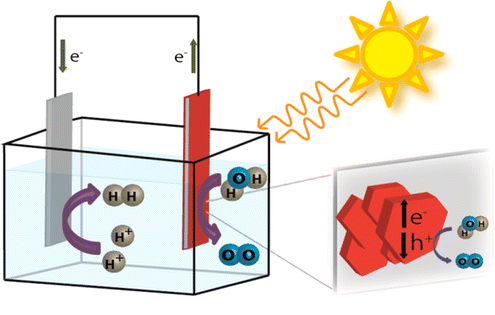
2014.06.01
Last week (May 25th-29th) we (Paula, Rui, László and I) were presenting at 47th Heyrovsky Discussion on Electrochemistry of Organic and Bioactive Compounds in Trest (Czech Republic). The meeting was on occasion of the 55th anniversary of awarding Professor Jaroslav Heyrovsky by Nobel Prize for the invention of polarography.
The following was presented:
- Electric field effects on interfacial behavior of surface-tethered DNA (invited lecture, Elena)
- Direct electrochemical and AFM detection of amyloid-beta peptide aggregation on basal plane HOPG (Paula)
- DNA biosensor exploiting direct DNA immobilization onto gold via phoshorothioated dA* tags (Rui)
- Electroanalysis of modes of methylene blue binding to gold-tethered DNA (László)
We had a lot of discussions – it was a true Heyrovksy discussion!
For László it was a first experience, after only 3 months of his PhD, he showed very good results;
Rui’s presentation was very well received, even Prof. Emil Palecek was impressed;
Paula demonstrated that she is becoming a real expert in electroanalysis of amyloidosis.
Congratulations to all!
Well done, angels!
Charlie (aka Elena)
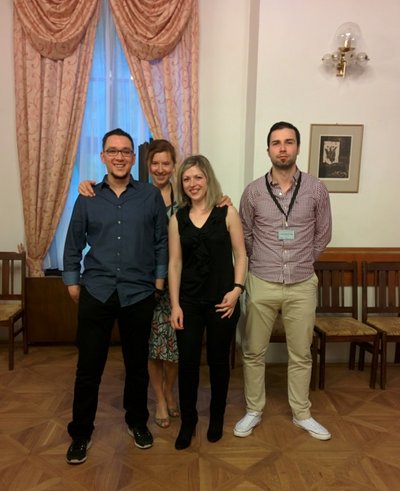
2014.04.11
Today Alireza Abi has defended his PhD work on "Novel DNA Technologies for Electrochemical Genosensor and Aptasensor Development"
Opponents were: Professor Heinz-Bernhard Kraatz, Department of Physical and Environmental sciences, University of Toronto, Canada; and Professor Jens Ulstrup, Department of Chemistry, Technical University of Denmark, Denmark.
Chairman: Professor Daniel Otzen, iNANO and Department of Molecular Biology and Genetics, Aarhus University.
Good luck in your future career, Alireza.
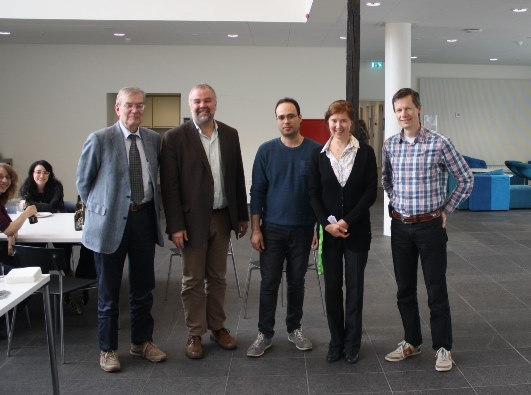
2014.02.20
Amyloid formation of proteins and peptides play a crucial role in many diseases such as Alzheimer’s, Diabetes and Parkinson’s disease. This makes amyloid formation a research field of high importance although it is not yet fully understood. Hence the development of fast and reliable characterization methods for real-time monitoring of protein misfolding is crucial if detection or treatment is to be carried out successfully.
Now a group of iNANO scientists (from the groups of Elena Ferapontova and Daniel Otzen) have developed a new way of detecting the extent of aggregation of alpha-synuclein (alphaSN), involved in Parkinson's disease and other neurodegenerative disorders by monitoring the electrochemical oxidation of tyrosine (Tyr) residues ?SN.
This allows for an easy way of detection and monitoring small monomeric species of alphaSN which are believed to be the toxic species in the overall fibrillation pathway. This new technique will serve as a great supplement to fluorescence which is best used for monitoring fibers and larger molecules. Now researchers can easily follow the whole process in vivo from monomer to fibril.
The research article is recently published in the Analyst.
